Joyce T. Strand's Blog, page 26
May 6, 2013
WHAT THE EXPERTS SAY: Crime Novelist Harry Bingham
 Harry Bingham, Author
Harry Bingham, AuthorTALKING TO THE DEAD
Crime novelist Harry Bingham is a best-selling British author whose latest novel TALKING TO THE DEAD is the first to feature Fiona Griffiths, a Welsh detective with a secret. His reviewers compare Fiona to Stieg Larsson’s Lisbeth Salander. In addition to his latest novel, he has written financial thrillers and historical romances as well as writing-tutorials.
Mr. Bingham gave up an investment banking career to become a writer. In addition to authoring, he also runs a business, “Writers’ Workshop.” He lives in Oxfordshire with his wife, is a dog lover, and is expecting twins!
Q: Your reviewers compare TALKING TO THE DEAD to Stieg Larsson’s books and Fiona Griffiths to Lisbeth Salander. They also suggest that Fiona is the real story of the book. Did you write your story to be about Fiona or is Fiona there to solve the crime?
Harry Bingham: Both. There are really three mysteries in the book. One is the crime. Two is the enigma of Fiona’s strangeness. And three – well, the reader doesn’t even know there’s a third mystery until the very last chapter of the book. It always seemed to me that crime novels were about puzzles, so it made no sense to have the main character be too easily read. Fiona is as much of a puzzle as any crime she tries to solve.
Q: How do you engage readers to care about Fiona?
Harry Bingham: I think the first person voice is a part of it. It places you so immediately inside the character’s head that the author has a huge headstart in gaining the reader’s engagement.
But I also had a really interesting insight from Kate Miciak, my wonderful American editor. She happened to mention that a lot of British crime novels don’t do well in the US, because they’re too dark, too complex and too morally ambiguous. I thought, huh? You just bought my book. It’s as dark, complex and ambiguous as you can get.
And so it is. But as Kate pointed out, Fiona wants to be normal. She strives to better herself, to seek the light. Kate thought that American readers would respond to that striving – and I think that readers more broadly are willing to forgive Fiona her character quirks because they see how hard she struggles.
Q: Why did you decide to write in the first person? How difficult is it to assume the persona of Fiona?
Harry Bingham: Most crime thrillers are written in the third person and flick around different narrative viewpoints. That technique makes it much easier to generate tension. (So you can see the bad guy planting the bomb. You can be with the investigator as they walk towards it. You can then flip to the viewpoint of the strange creepy guy with the long range surveillance equipment. And so on.)
But I wanted Fiona to dominate the book. Her voice. Her point of view. And nothing else. That approach certainly creates a kind of intensity, but I like it as well because of the mystery aspect. It’s a kind of trick: we’re in Fiona’s head the whole time. We’re privy to what she’s thinking, feeling, etc. And yet she’s hiding this huge secret and the reader goes crazy trying to figure out what it is. I loved setting up that mystery – it demanded some of my most creative writing - and I think readers are responding really well.
As for the difficulty of becoming her – well, it took me about two years to find her voice, her essence, and after that, I was away. When I lock into my Fiona place, it feels completely natural, as though I’ve got a brilliant-but-nuts, somewhat violent, always unpredictable, young woman inside my middle-aged male head. She and I get on very well. I love having her as a house-guest.
Q: How important is Wales as a setting for the story? Could Fiona exist outside of Wales?
Harry Bingham: Fiona could exist anywhere, I guess, but works well because it’s so nicely ambiguous. On the one hand, Wales is its own country – with a national Assembly, a language, a huge history, some proud traditions – but Cardiff is also, in the wider British context, just another provincial city. The part of Wales I write about is intensely urban, but just a few miles away, you have some of the most deeply rural parts of Britain. Wales is ancient – it’s where King Arthur and Merlin came from – but it’s terribly new too: the big coastal cities were essentially Victorian creations built to handle the coal and iron industries.
These ambiguities work well for Fiona, because her status is ambiguous too. On the one hand, she’s very marginal. (Young, junior, petite, kooky, provincial.) On the other hand, she’s the storming force who is going to blast any investigation wide open and wreak plenty of havoc along the way. And of course, I’ve got a lifelong relationship with Wales, so I always wanted to set a book there.
Q: What makes a good villain?
Harry Bingham: The villain in my story is strangely unimportant. I mean, yes, there are some bad guys and, yes, they get their come-uppance, but while the victims matter a lot to the story, the villains aren’t glamorized in any way.
So I think I don’t have a very good villain. It’s not part of my story particularly. More broadly, I think the essence of good villains is a kind of charisma. A dangerous attractiveness. Satan in Paradise Lost. Hannibal Lecter in Silence of the Lambs.
Q: Who are your target readers for TALKING TO THE DEAD? What are they looking for?
Harry Bingham: I don’t target readers! I can never really get my head around the idea that writers can set out to design a product the way a food manufacturer launches a new line of cookies. I just write a manuscript that is as good as I can make it and hope that my editor and ultimately my readers will share that assessment.
I think typically my readers are sophisticated ones who enjoy some real entertainment. So I guess my audience is going to be quite similar to Gillian Flynn’s: readers who might read Jonathan Franzen one day, and Harlan Coben the next.
Q: You have written both fiction and non-fiction across genres. What is the difference in writing approach? Do you prefer writing one over the other? Is crime your favorite genre?
Harry Bingham: I’ve written different types of fiction too: financial thrillers and historical romances. I think, when it comes to fiction, I’ve settled with crime. It suits me very well and I doubt if I’ll ever write a non-crime novel again.
As for non-fiction, there’s a lovely clarity about it. You set yourself a subject, then go after it. Facts constrain what you can do, whereas fiction feels scarily unboundaried by contrast. I don’t want to stop writing non-fiction occasionally: there are still a couple of books I want to write. (Trouble is, crime novelists really need to pump out one book a year and I’m not sure where that’s going to leave the non-fiction. Ah well …)
Q: In addition to being a successful writer, you run a business “Writers’ Workshop.” Can you tell us a little about it?
Harry Bingham: The Writers’ Workshop offers an editorial service for new writers. Basically, aspiring writers can bring their manuscripts to us and get the kind of editorial interaction that used to be available only to pro authors. We also run creative writing courses and host a big annual writing festival, which brings together a whole host of literary agents, authors, publishers and so on. I love doing all this because it reminds me daily about what brought me to writing in the first place. Really, it’s 100% about passion, 0% about money. You can find out about the manuscript assessments here, the creative writing courses here, and the Festival here.
Q: You used to be an investment banker. Why?
Harry Bingham: From fairly early childhood, I wanted to be a writer but I knew that I needed some real job first. For various reasons, banking seemed like a good choice at the time –and really, I don’t regret it. For smart, ambitious kids, the industry offered an amazing level of responsibility and exposure to the wider world. I had fun for about ten years, then quit. I’ve gone from the least-loved and most-lucrative profession in the world to one of the most-respected and least-lucrative. But I love what I do now. Love it, love it, love it.
Q: Who is Harry Bingham? What do you like to do when you’re not writing?
Harry Bingham: On my website, I offer a twenty-five word bio, which runs in its entirety: “Forty-something. Married. British. Dogs. Living in Oxfordshire. Runs The Writers' Workshop. Used to be a
 banker. Now a full-time writer. Likes rock-climbing, walking, swimming. Done."
banker. Now a full-time writer. Likes rock-climbing, walking, swimming. Done."That was reasonably complete when I wrote it, but I now think I need to squeeze in, “A few months away from having twins. Total chaos looming.” My wife and I have had problems conceiving and these kids are coming to us relatively late in our marriage. So we’re petrified, but delighted. We couldn’t be happier.
About Harry Bingham
Harry Bingham is a British writer, who lives in Oxfordshire, England. After working as an investment banker for ten years, he saw the light and turned to writing. He’s written a variety of fiction and non-fiction over the years, but has finally settled on crime. TALKING TO THE DEAD is the first in a series of crime novels, featuring a complex Welsh detective heroine, Fiona Griffiths.
About TALKING TO THE DEAD
Named one of the best books of the year by
The Boston Globe • The Seattle Times
She knows what it’s like . . .
At first, the murder scene appears sad, but not unusual: a young woman undone by drugs and prostitution, her six-year-old daughter dead alongside her. But then detectives find a strange piece of evidence in the squalid house: the platinum credit card of a very wealthy—and long dead—steel tycoon. What is a heroin-addicted hooker doing with the credit card of a well-known and powerful man who died months ago? This is the question that the most junior member of the investigative team, Detective Constable Fiona Griffiths, is assigned to answer.

But D.C. Griffiths is no ordinary cop. She’s earned a reputation at police headquarters in Cardiff, Wales, for being odd, for not picking up on social cues, for being a little overintense. And there’s that gap in her past, the two-year hiatus that everyone assumes was a breakdown. But Fiona is a crack investigator, quick and intuitive. She is immediately drawn to the crime scene, and to the tragic face of the six-year-old girl, who she is certain has something to tell her . . . something that will break the case wide open.
Ignoring orders and protocol, Fiona begins to explore far beyond the rich man’s credit card and into the secrets of her seaside city. And when she uncovers another dead prostitute, Fiona knows that she’s only begun to scratch the surface of a dark world of crime and murder. But the deeper she digs, the more danger she risks—not just from criminals and killers but from her own past . . . and the abyss that threatens to pull her back at any time.
Links
Purchase Sites Amazon Barnes & Noble iTunes
Author Sites Goodreads Blog/website
Twitter address@harryonthebrink
Published on May 06, 2013 20:23
May 2, 2013
WHAT THE EXPERTS SAY: Cross-genre Author Tony Riches
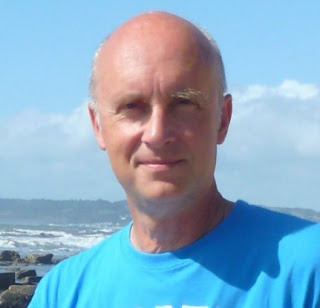 Tony Riches, Author
Tony Riches, AuthorQUEEN SACRIFICE, THE SHELL,
ATLANTIS--THE FINAL SPACE SHUTTLE,
TERRA NOVA: ANTARCTIC NOVA,
PERSONAL PRODUCTIVITY FOR BUSY MANAGERS
British Author Tony Riches has written an eclectic group of fiction and non-fiction books—each unique in its story-telling. His first book QUEEN SACRIFICE is an historical novel about the queens, knights and pawns in 10thcentury Wales. His most recent novel THE SHELL describes the kidnapping of a couple in Kenya. Early interest in space exploration led him to write ATLANTIS—THE FINAL SPACE SHUTTLE MISSION. He drew on his experience as Head of Cardiff Harbour Authority to write TERRA NOVA: ANTARCTIC VOYAGER about Captain Scott's exploits in the early 20th century. Riches also shared the benefit of his management experience in PERSONAL PRODUCTIVITY FOR BUSY MANAGERS.
His personal life is as eclectic as his writing. He plays both the flute and the saxophone, and likes to listen to music from Pink Floyd to Corelli. He enjoys sea kayaking and riding his Kawasaki Vulcan motorcycle. He currently lives with his wife in Pembrokeshire, Wales.
Q: You are a cross-genre writer – and beyond. You have written an eclectic group of books. What inspired you to write your first book? How did you go from your first book to the next?
Tony Riches: Charles Dodgson aka Lewis Carroll memorably brought chess pieces to life in his sequel Through the Looking-Glass. I was fascinated by the idea as a child but when I started researching the early history of my native Wales I was inspired to write my first novel, QUEEN SACRIFICE. I was learning about the 10th Century kings and queens, supported by knights and bishops, with the ordinary people becoming pawns in their civil wars, so it was fun to make the whole country a chess board – with a castle at each corner! Authors will understand how much I missed writing it once it was finished, so I went straight on to writing my second novel, THE SHELL.
Q: You write both fiction and non-fiction. How different are they to write? Do you still need to “tell a story” in your non-fiction books? What inspired you to write Personal Productivity for Busy Managers and Agile: Project Management for Busy Managers?
Tony Riches: The ‘for Busy Managers’ series resulted from my long career in project management and change management consultancy. I saw many good managers overwhelmed by the sheer amount of work and the alarming pace of change, so decided to keep each book in the series as short as possible. Personal Productivity is simply a collection of 100 useful tips, gathered from friends and colleagues – and yes I do tell ‘stories’ from my own experience. The main point of my Agile Project Management book is that we should really welcome changing requirements and ‘coach’ flexible, self-directing teams. I’ve used all these ideas very successfully and was really pleased when the Agile book became a US Amazon best seller. (I am currently working on the third in the series, Transformational Change for Busy Managers, which is proving very topical!)
Q: How important is the setting for your recently-published book THE SHELL? Could you have created a similar story in a different setting?
Tony Riches: That’s an interesting question - the real story is about what happens when the protective ‘shell’ of the modern world is suddenly stripped away. I could have set it in almost any time and place but lived in Nairobi as a child and went on holiday in Mombasa, so it is a very real place for me with powerful memories. The idea for the book was inspired by warnings given to my wife and me when we returned recently to Mombasa for a holiday. I was about a third of the way through writing it when it actually came true and a couple were attacked on a beach just north of Mombasa.
Q: Even your fiction books are rooted in real events. How important to telling your fictional stories are back story and facts?
Tony Riches: I enjoy finding out the secret histories we were never taught at school – which are often more amazing than any fiction. My third novel The Secret Diary of Eleanor Cobham is about a distant relative of my wife who was charged with using witchcraft against the king. I’ve been lucky to find a wealth of information about her and what it must have been like to live in the England of 1450 – but almost nothing is known about Eleanor after she was imprisoned for life in Beaumaris Castle on the Isle of Anglesey in Wales. I am therefore writing it as her recently discovered ‘secret diary,’ with the self-imposed rule that any events outside the castle must be as accurately researched as possible.
Q: In QUEEN SACRIFICE you tie the events to a famous chess game (Bobby Fischer 1956). What led to this ploy? How did it enhance your story? Do you play chess?
Tony Riches: Yes QUEEN SACRIFICE is based on what is arguably the most famous chess game of all time - and I set myself the challenge of making the narrative follow every move. It wasn’t easy when, for example, a bishop takes a pawn and I had to find a compelling reason within the story. Thirty-two characters are quite a crowd for the reader to cope with but the two queens were the only female roles, so I created a handmaiden for the white queen and a sister for the black queen, as well as a ‘housekeeper’ for one of the bishops. I also realised that readers would possibly know how it all ends, so I had some fun ‘breaking the rules’ of normal fiction writing by having some of my best characters suddenly killed off – as they could well have been in 10th century Wales.
Q: Of all the books you’ve written, which one did you enjoy writing the most? Why?
Tony Riches: I really enjoyed writing THE SHELL as I had learned a lot about the technique of writing a novel by then and could just immerse myself in what is happening in present day Kenya. Each chapter switches between Lucy’s kidnapping and her husband Steve’s desperate attempts to rescue her, which really kept up the pace – at one point I was writing nearly a chapter a day. There are some amazing contrasts and tensions between the old and new Kenya - enough for a whole series of novels, so I may well return for a sequel. It also helped to know I had an excellent editor (UK Author Judith Barrow) to keep me on the right track.
Q: How do you create engaging characters for your readers?
Tony Riches: It helps if you really care about your characters and try to make them likeable and flawed at the same time. I carefully work out their back stories and enjoy putting in a few surprises, even for minor characters such as the pawns in QUEEN SACRIFICE. (I read some useful advice once, which was to work out how your character would react in a given situation - then occasionally make them do the exact opposite and eventually explain to the reader why they acted so ‘out of character.’) The names are also really important. I spent ages choosing authentic Welsh names for every character in QUEEN SACRIFICE and checking the meanings to make sure they were a good ‘fit’.
Q: How do you conduct research? Do you start to form your story as you’re researching? Or do you research to support your story?
Tony Riches: I like to do my research as I am writing, so the smallest details are fresh and clear in my mind. Sometimes this can lead to lucky discoveries. I live close to Pembroke Castle, birthplace of King Henry VIII and visited the castle with I was writing QUEEN SACRIFICE. I was amazed to find a detailed scale model of how the castle would have looked in the 10th century, so I took photos and was able to look at them as I was describing it! Research for The Shellwas easy as all I had to do was keep an eye on Kenyan Television news, which you can watch online.
Q: Tell us something about you. What kind of music do you like? What’s your favorite place to visit? What’s your favorite movie? What do you like doing when you’re not writing?
Tony Riches: I have two grown up children and a grandson who loves to come and stay with us in Wales. I play the saxophone and flute and would have liked to become a full-time musician but am really just a busker, as I play by ear rather than read the music. My musical tastes are very varied, ranging from Pink Floyd to Corelli and my latest discovery, the new singer songwriter Beck Goldsmith. My favorite places to visit have to be Hampton Court and the Lake District, where I am trying to kayak on as many of the lakes as I can (there are 14 and I’ve done 6 so far). My all-time favorite movie is Groundhog Day – for its life-affirming message and when not writing I enjoy sea kayaking and riding my Kawasaki Vulcan motorcycle.
About Tony Riches
Tony Riches lives with his wife in Pembrokeshire, one of the most unspoilt areas of the UK. Like many authors, he began writing short stories and contributing to a range of magazines. His first novel, QUEEN SACRIFICE was written after looking into the early history of Wales, and an interest in space exploration going back to witnessing the Apollo landings as a child led to the writing of ATLANTIS--THE FINAL SPACE SHUTTLE MISSION.
Before becoming a writer he was Head of Cardiff Harbour Authority and supported the Captain Scott Society with exhibitions on the departure of Scott's ship the Terra Nova from Cardiff Docks in 1910. He has since researched and written TERRA NOVA: ANTARCTIC VOYAGER with support from the Glamorgan Archives and Captain Scott's granddaughter, Dafila Scott.
About QUEEN SACRIFICE
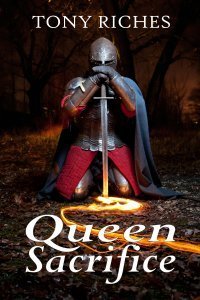 10th Century Wales is a country divided, with the kingdom of the south becoming Saxon and the north violently defending the old ways. The inevitable civil war is brutal and savage in this tale of divided loyalty and revenge, treachery and love.
10th Century Wales is a country divided, with the kingdom of the south becoming Saxon and the north violently defending the old ways. The inevitable civil war is brutal and savage in this tale of divided loyalty and revenge, treachery and love.Kings and queens battle for control of the country, with wealth and glory for the victor and death and ruin for the loser. The bishops of Wales struggle to keep the faith while knights and war lords turn events to advantage and the lives of ordinary people are changed forever by the conflict.
Queen Sacrifice is also a legendary tactic in the ancient game of chess. Russian chess grand master Lakov Neishtadt describes the sacrifice of the queen for higher interests as “a source of continuing fascination for the chess novice and master alike.”
The narrative faithfully follows EVERY move in the queen sacrifice game, known as "The Game of the Century" between Donald Byrne and 13-year-old Bobby Fischer in New York City on October 17th, 1956.
About THE SHELL
 Mombasa beach: The dream holiday of a lifetime turns into a nightmare for a young couple. Brutally attacked and kidnapped, she has to battle for survival in one of the remotest and most dangerous areas of north east Kenya. He has to find and rescue her - before it is too late.
Mombasa beach: The dream holiday of a lifetime turns into a nightmare for a young couple. Brutally attacked and kidnapped, she has to battle for survival in one of the remotest and most dangerous areas of north east Kenya. He has to find and rescue her - before it is too late.Palm trees line an idyllic beach of white coral sand. An Arabian dhow sails on the clear blue waters of the Indian Ocean. Two lovers are ruthlessly torn apart, perhaps forever. Lucy is bound and helpless, taken far from the safety of the world she knows. Unconscious and bleeding, nothing has prepared Steve for what he needs to do.
The inability of the authorities to help means Steve has to find the strength and courage to risk his own life in the desperate search for Lucy and fight back against the kidnappers. His journey takes him deep into the African wilderness, where death and danger wait for the unwary.
Lucy’s journey is mental as well as physical as she discovers how easily the protective shell of her old world has been stripped away. Everything she took for granted is gone and she has to fight to survive, one day at a time. Whatever happens, she knows her life will never be the same again.
Based on actual events and current news reports, this fast-paced action and adventure novel explores the reality of the tensions between the old tribal ways and life in the new, rapidly developing country of Kenya.
About PERSONAL PRODUCTIVITY FOR BUSY MANAGERS
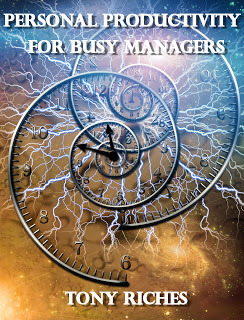 Personal productivity is under scrutiny as never before. In every sector global recession means continued pressure to reduce costs and increase productivity. All organizations are now driven to shine a spotlight closely at the contribution from every manager. A brilliant track record is no longer any guarantee of future job security. What matters is how much value you are adding now.
Personal productivity is under scrutiny as never before. In every sector global recession means continued pressure to reduce costs and increase productivity. All organizations are now driven to shine a spotlight closely at the contribution from every manager. A brilliant track record is no longer any guarantee of future job security. What matters is how much value you are adding now.So how do we really do more with less? There are plenty of books with tips on how to manage your time - but although time management is likely to be part of the solution, it will not be enough on its own. The answer is to take control of your own productivity and lead by example, drawing on practical experience and develop innovative approaches that will really make a difference.
Keynote speaker and productivity specialist Neen James says, “In today’s hectic workplace, it’s not just time management that you have to master, it’s super-productivity that gets the results. The secrets of super-productivity are not about working more; they’re about focusing your time, effort and energy on the things that will deliver the best results for you. It doesn’t mean ‘work longer’, ‘invest more money’, ‘create more lists or put your lists in a certain order’. It means: do less of the things that have no significance and more of the things that create an impact.”
You may be a top executive in an international corporation or responsible only for yourself. There are one hundred tips here, based on the experience of many managers in every type of organization - so the challenge is to pick just ten that seem to fit with how YOU would like to work and see what you can do to increase your personal productivity.
Links
Find Tony on twitter @tonyriches and visit his blog The Writing Desk
For more information about Tony’s books please see Amazon and Goodreads
Published on May 02, 2013 19:45
AUTHOR SPOTLIGHT: Melissa Foster
HAVE NO SHAME When civil rights and forbidden love collide
 "This book will resonate with readers who enjoyed Kathryn Stockett's, THE HELP, Julie Kibler's, CALLING ME HOME, John Grisham's, A TIME TO KILL, Sue Monk Kidd's, THE SECRET LIFE OF BEES, and Kathleen Grissom's, THE KITCHEN HOUSE."
"This book will resonate with readers who enjoyed Kathryn Stockett's, THE HELP, Julie Kibler's, CALLING ME HOME, John Grisham's, A TIME TO KILL, Sue Monk Kidd's, THE SECRET LIFE OF BEES, and Kathleen Grissom's, THE KITCHEN HOUSE."Buy it Now on Amazon: http://amzn.to/16TaOSZ
Buy it Now on B&N: http://bit.ly/12WGCYD
"Within moments of starting to read, you will be transported back to the Arkansas of 1967 - hot, dusty, utterly rural and edgy. Poor white farmers dependent upon cheap black labor who, due to their superior numbers, are constantly suppressed, living on the wrong side of town, ghettoised and terrified. You will remember scenes from `In the Heat of the Night' and `Easy Rider'; you will remember that, less than fifty years ago, if you were black, you could be beaten for simply being in the wrong place at the wrong time. And if you died at the hands of a white youth, justice would almost certainly be denied you." Author Roderick Craig Low
SUMMARY
Alison Tillman has called Forrest Town, Arkansas home for the past eighteen years. Her mother's Blue Bonnet meetings, her father toiling night and day on the family farm, and the division of life between the whites and the blacks are all Alison knows. The winter of 1967, just a few months before marrying her high school sweetheart, Alison finds the body of a black man floating in the river, and she begins to view her existence with new perspective. The oppression and hate of the south, the ugliness she once was able to avert her eyes from, now demands her attention.
When a secretive friendship with a young black man takes an unexpected romantic turn, Alison is forced to choose between her predetermined future, and the dangerous path that her heart yearns for.
****
"A gripping and poignant novel dealing with a subject once taboo in American society." Hagerstown Magazine
"Have No Shame is a powerful testimony to love and the progressive, logical evolution of social consciousness, with an outcome that readers will find engrossing, unexpected, and ultimately eye-opening." Midwest Book Review
"A historical novel of love and its triumph, told with a unique and compelling voice." Bestselling Author Kathleen Shoop
"Have No Shame is a delightful eye opener and a rather poignant book that everyone everywhere should put on their must-read list." Readers' Favorite
"A dynamic and heartwarming tale of young love, giving testament to those who struggled so we can live in an integrated society." Author Rachelle Ayala
"[HAVE NO SHAME] Perfectly catches the South at the dawning of the Civil Rights Movement. Melissa Foster takes us on an adventure that twists and turns unpredictably to a tense climax that renders this novel a true page-turner. This is undoubtedly the best novel I have read in a long time." Roderick Craig Low, Author of 'Promises of Love and Good Behaviour'
"This book is not just a story; it's an experience." Author G.E. Johnson
Buy HAVE NO SHAME on Amazon: http://amzn.to/16TaOSZ
Buy HAVE NO SHAME on B&N: http://bit.ly/12WGCYD
INTERNATIONAL BESTSELLING AUTHORMelissa Foster
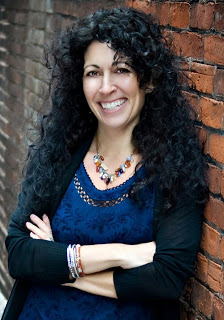 Melissa Foster is the award-winning author of four International bestselling novels. Her books have been recommended by USA Today's book blog, Hagerstown Magazine, The Patriot, and several other print venues. She is the founder of the Women’s Nest, a social and support community for women, the World Literary Café. When she's not writing, Melissa helps authors navigate the publishing industry through her author training programs on Fostering Success. Melissa is also a community builder for the Alliance for Independent Authors. She has been published in Calgary’s Child Magazine, the Huffington Post, and Women Business Owners magazine. Melissa hosts an annual Aspiring Authors contest for children and has painted and donated several murals to The Hospital for Sick Children in Washington, DC. Melissa lives in Maryland with her family.
Melissa Foster is the award-winning author of four International bestselling novels. Her books have been recommended by USA Today's book blog, Hagerstown Magazine, The Patriot, and several other print venues. She is the founder of the Women’s Nest, a social and support community for women, the World Literary Café. When she's not writing, Melissa helps authors navigate the publishing industry through her author training programs on Fostering Success. Melissa is also a community builder for the Alliance for Independent Authors. She has been published in Calgary’s Child Magazine, the Huffington Post, and Women Business Owners magazine. Melissa hosts an annual Aspiring Authors contest for children and has painted and donated several murals to The Hospital for Sick Children in Washington, DC. Melissa lives in Maryland with her family.Visit Melissa on The Women's Nest, Fostering Success, or World Lit Cafe. Melissa enjoys discussing her books with book clubs and reader groups, and welcomes an invitation to your event.
Awards Megan's Way
2011 Beach Book Award Winner (Spirituality)
2011 Readers Favorite Awards, Winner (Fiction/Drama), Finalist (Women's Fiction)
2010 Next Generation Indie Book Award, Finalist (Spirituality)
2011 New England Book Festival, Honorable Mention (Spirituality)
Chasing Amanda
2011 Readers Favorite Awards, Winner (Paranormal), Finalist, (Women's Fiction, Mystery)
2011 Dan Poynter's Global eBook Awards, Winner, (Paranormal)
Top 10 Books of 2011, Pixel of Ink
Amazon Top 100 75+ Days running
Indie Reader's Bestselling List That Counts (8 weeks)
Top Books of 2011, The Write Agenda
Come Back To Me 2012 Next Generation Indie Book Awards, Finalist, 2012 Readers Favorite Awards, Finalist 2012 Kindle Book Review Best Indie Books Award, Finalist2011 Dan Poynter's Global Ebook Awards, Finalist Top 5 Must Read Books of 2011, IndieReader
Top Ten Books of 2011, Tea Time With Marce
IndieReader Best Reviewed Books of 2011, Huffington Post
Website: http://www.MelissaFoster.comFacebook: http://www.facebook.com/pages/Melissa-Foster/240064542695303Twitter: http://www.twitter.com/Melissa_FosterThe Women’s Nest, women’s social network: http://www.TheWomensNest.comWorld Literary Café: http://www.worldliterarycafe.comFostering Success: htto://www.fostering-success.comFacebook Melissa Foster: http://www.facebook.com/MelissaFoster... (Fanpage)Goodreads http://www.goodreads.com/author/show/...
Published on May 02, 2013 10:02
April 29, 2013
WHAT THE EXPERTS SAY: Author Lawrence Fisher
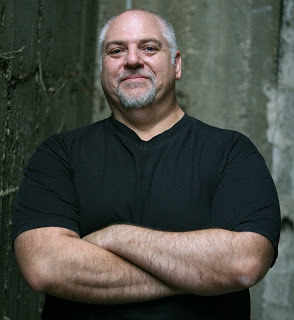 Lawrence Fisher, Author
Lawrence Fisher, AuthorKILL ME NOW!
Please welcome Lawrence Fisher, who turned his dating escapades into prose to remind us "to have fun and enjoy life." Although frank, his book KILL ME NOW! is filled with humor that "is pointed and slaps the reader in the face with its realism.” When Fisher is not writing about his dates, he works in computers and education. He also holds a personal fitness trainer certification, and currently lives in Tel Aviv.
Don’t miss the excerpt following the interview.
Q: Why did you write KILL ME NOW!?
Lawrence Fisher: It kind of like wrote itself. I went on a date and my friends asked me how it went and when I told them they packed out laughing. I started a blog about amusing or horrifying dates and one reader said that I should start a book and so I did.
Q: Is KILL ME NOW! a “how to” book to help guide men how to pick up women?
Lawrence Fisher: Heavens no! I had no idea what I was doing, so my only guide to readers is to not do what I did. It is simply to show people that the idea is to have fun and enjoy life. One woman told me to my face that I was too fat. At one stage in my life, I would have been deeply hurt by that statement but nowadays, I brush it off and move on. As I say in my book, NEXT!
Q: Is KILL ME NOW! fiction or non-fiction?
Lawrence Fisher: Total non-fiction. These incidents actually happened!
Q: Although this is a book about men “in pursuit” of a soulmate, I discovered that I, a woman, laughed and appreciated the situation as I was reading an excerpt. Did you write your book for men or were you thinking about women readers, also?
Lawrence Fisher: I geared this book towards guys like me who enter the dating world and have no idea what they are doing. They are not going to find anyone sitting on a couch, although in the world of online dating, you do not know. But I found that like you, many female readers get a kick out of seeing the male mindset and of course, I use humor to tell my story.
Q: “Not my usual fare, but I do love humor...and the author hooked me with the book description and title.” How important is humor in telling your story?
Lawrence Fisher: If there is no humor, no story! Simple as that! If I cannot find the humor in an incident, then there is something wrong with me and the incident is not worth talking about. You remember I mentioned the woman who called me fat? I was thinking of adding that as a story and changing Winston Churchill’s famous quote to: “Yes I am fat, but I can diet and be thinner, but you will always be unpleasant.” There is a debate as to whether it was Churchill who made the comment “And you, Bessie, are ugly. But I shall be sober in the morning, and you will still be ugly.”
Q: How did you come up with the title KILL ME NOW!?
Lawrence Fisher: It was a nice spring evening when I met, Ms Motor Mouth. Young Lawrence (ok, young at heart...) shaved, showered and perfumed himself up to meet Ms Motor Mouth, who was a blind date, bestowed upon him by a match maker. Yes, yes, you heard it, a match maker. Read my book for sordid details of the awfulness of this period.
So I met Motor for coffee and for the better part of two hours, she did not stop talking. The poor waiter was standing next to her waiting for her to order while she went on and on. The only thing I knew about her soliloquy was that she was complaining about her job. Not explaining, but complaining. Should I have charged her $200 for therapy?
My mind wondered and wandered and I looked up to the heavens for release. Scotty was not available, but the title was born. Thanks Ms Motor Mouth.
Q: “Mr. Fisher's style is personal and he opens his soul for all to see” How do you get readers to care about you, the “protagonist,” in your book? How do you create you as the main “character?”
Lawrence Fisher: I think people care because I am a regular guy, not one of the Hollywood types but a regular Joe, like them. Just someone looking for a mate.
Q: What made you want to be a writer?
Lawrence Fisher: A reader made me become a writer. I never thought I would but I am not sorry I did!
Q: What’s next? How do you envision your writing career?
Lawrence Fisher: KILL ME NOW!will be a trilogy. I am working on the second and third books together. The second will be “How I didn’t meet your mother” and the third will be “Why didn’t I listen to my friends?”
Q: Tell us something about you. Since you no longer have to search for your soulmate (and I trust married life is agreeing with you), what do you like to do when you’re not writing?
Lawrence Fisher: Supposed to be a secret that I am married, until the second book is published. Well, I happen to love my wife and she likes my book. So apart from being with her, I love reading and of course I have my day job.
About Lawrence Fisher
Lawrence has been out on countless dates in search of his soulmate. Like most people he has found himself in many strange situations. However, he found that he could see the humor in each situation. Lawrence is a single guy in his late 40s. He has worked in computers and education for about 25 years and also holds a personal fitness trainer certification. He currently lives in Tel Aviv, Israel. Lawrence Fisher spends his days writing software tutorials and his nights in the endless search for the ONE. Will he find her? Or will there be book two out?
About KILL ME NOW!
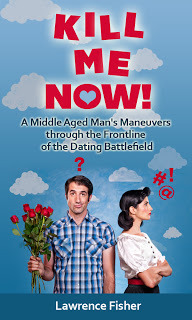 KILL ME NOW! is about Lawrence, a man in his late 40s dodging bullets deep in the dating battlefield while searching for the ONE. In KILL ME NOW! Lawrence tries to decode signals of his enigmatic opponent, often resulting in his hasty retreat. Why is she resting her head on her hand? Is she bored? Or is she interested? He finds himself in many humorous situations where he has no idea what he is doing and no idea how to maneuver through the skirmish. Trapped in the epicenter of the courting conflict, the motivating thought that sustains him is his strong belief that somewhere out there, she awaits. Join Lawrence as he painfully stumbles through the mating minefield in search for his SOULMATE while silently wishing that he was elsewhere. Be warned, you will laugh!
KILL ME NOW! is about Lawrence, a man in his late 40s dodging bullets deep in the dating battlefield while searching for the ONE. In KILL ME NOW! Lawrence tries to decode signals of his enigmatic opponent, often resulting in his hasty retreat. Why is she resting her head on her hand? Is she bored? Or is she interested? He finds himself in many humorous situations where he has no idea what he is doing and no idea how to maneuver through the skirmish. Trapped in the epicenter of the courting conflict, the motivating thought that sustains him is his strong belief that somewhere out there, she awaits. Join Lawrence as he painfully stumbles through the mating minefield in search for his SOULMATE while silently wishing that he was elsewhere. Be warned, you will laugh! Excerpt
I read off my iPhone, “Baby, I’m no Fred Flintstone but I can make your Bedrock.” OK, I agree with you. That is a lame line.
She leaned toward me seductively and said, “Go Google again!” Was she being rude to me or not? I still have no idea. I think she had learned the true art of diplomacy, which is the ability to tell someone to go to hell so that he actually looks forward to the trip.
It is very important to make a good first impression. The first impression is vital. It is difficult to correct a bad first impression. Oh, the pressure, the pressure. There is only one chance to do it right!
Going up to a girl at a bar saying, “What is a girl like you doing in a place like this?” will probably earn you a smirk. Not only is the line antiquated, but it seems to work only in the movies, and sometimes not even there. The only time I tried that line, the girl said it was her bar and that I should not refer to it as “such a place”.
Oh, what should I do? What should I do?
The internet provides contradicting information. What's new? When we search for something in our field of expertise, we understand whether it sounds right or not. But if our understanding is close to zero, how can we define what is right and what is not?
Somehow I need to hone my non-existent skills. Somehow I need more practice. Somehow I need experienced friends.
Looking at my friends and hearing their stories, I wonder, does experience really help?
Oh, crap! Kill me now!"Links Amazon
WebsiteFacebook Twitter: https://twitter.com/lbigfootGoodreadsLinkedIn
Published on April 29, 2013 20:50
April 28, 2013
AUTHOR SPOTLIGHT: Other Worldly Authors Alex and SJ Byrne
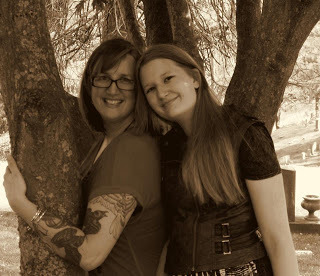 Please shine the spotlight on Alex and SJ Byrne, a mother-daughter team who together wrote the "other worldly" ONCE A DRUID -- just published. Check it out.
Please shine the spotlight on Alex and SJ Byrne, a mother-daughter team who together wrote the "other worldly" ONCE A DRUID -- just published. Check it out.Living in the mountains of Western North Carolina, Alex and SJ Byrne are just trying to make their way through the insanity that comes with creativity. Writing is SJ’s passion—life is her must—Alex is the force that brought this long anticipated novel to light after 17 years in a box.
About ONCE A DRUID
"By the light of the Lunar Eclipse—let them see!"
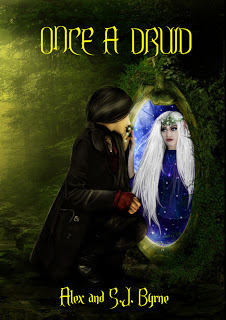
There is something seriously wrong in Kirra Munro's head. Besides suffering from amnesia, night after night she is plagued by dark dreams of other worldly rituals and a past she has no right in remembering—or does she?
Psychology professor Cayden McKinnon has the ability to unlock the blockages in her mind, but after one visit things begin unraveling far too fast.
Time is running out...or has the battle for one woman's soul just begun?
ExcerptBeyond her heavy eyelids, Kirra knew she was no longer alone. In the darkest shadows a presence had joined her.
The being didn’t breathe. Her sensitive hearing would have detected the slight whoosh of air filtering through the spongy mass of a living lung.
It also wasn’t human—her tongue would have tingled from the imminent promise of a blood offering.
Whatever the thing was, she had never encountered its kind before.
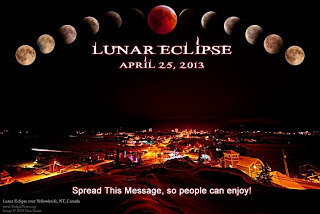
A slight shift in the air to the left alerted her to the creature’s exact position. Part of her wanted to be afraid but her stronger essence knew there was nothing to fear.
A prickling began in the tips of her toes as she pushed the comforting thought into every corner of her brain. Curious about the cause, she stilled her mind and focused on the heat spreading from her feet throughout the rest of her body. Not an entirely unpleasant sensation, it was much like bathing in a gentle wash of warm water.
Once the sensation penetrated her brain she knew all her past actions were being picked apart and judged by the invading heat. Somehow she understood that the being held her life in its hands. Despair saturated the infrastructure of her spirit but ceased almost immediately, leaving a sense of weightlessness at her soul’s core.
“Only the pure of heart can receive my protection—all others perish during the purging.”
The edict slipped into her thoughts like soft feathers turned to a thick warm liquid. Through the haze washing over her reflective process, Kirra sensed her body being lifted off the slab of stone and was unable to resist the movement.
To be cradled against an essence exuding such strength and vitality made her want to cry. All she’d been lacking in her heart flooded her system, choking the breath from her lungs.
“Weep not...”
The voice drifted off into unintelligible murmurings as the shadows behind her eyes turned pure black and Kirra’s thoughts were no more.
Links
PurchaseAmazon – Kindle Paperback
SJ Bryne author links
FacebookTwitterGoodreadsBlogger
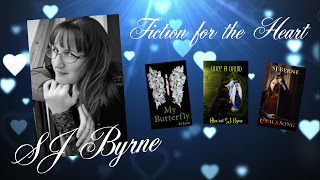
Published on April 28, 2013 10:22
April 25, 2013
WHAT THE EXPERTS SAY: Suspense Author J. J. DiBenedetto
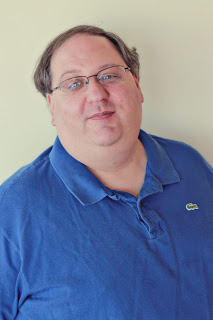 J.J. DiBenedetto, Author
J.J. DiBenedetto, AuthorDREAM STUDENT, DREAM DOCTOR,
DREAM CHILD, DREAM FAMILY
Suspense author J.J. DiBenedetto brings us a series of novels whose protagonist, Sara Barnes, sees other people’s dreams, including some gruesome murders. As Sara struggles to understand and even act on these dreams, "The tension built over the length of the story and I found myself unable to put it down," said one reviewer. In the four-book series, we see her grow, become a doctor, get married, and have a family - all while dealing with other people's dreams.
When the author is not writing about dreams, he enjoys operas. As with so many of us, he and his wife do whatever his cat says. And, he is a New York Giants fan.
Don't miss the short excerpt at the end of the interview.
Q: What inspired you to create a character who dreams other people’s dreams --and then build a series with that character?
J. J. DiBenedetto: The idea just “came to me” – that someone could see into dreams, and then use what they saw there in their waking life to solve a problem. Then I asked myself, “what problem could someone see in another person’s dream that they’d have to solve?” That’s where the idea of a killer who committed his crimes without witnesses came from—so the dreamer would be the only witness, and they’d feel compelled to act.
Q: Many of your reviewers appreciate the suspense in your series -- “a lot of suspense that will keep you guessing.” How do you create this suspense for your readers?
J. J. DiBenedetto: Mainly by trying to keep everything else in the book more realistic. Each of the books has a lot of focus on everyday life, whether it’s college or medical school or the everyday ups and downs of a marriage. I think that heightens the suspense of the dreams and the difficult situations my characters get involved in due to them.
Q: What do you do to help readers care about your characters?
J. J. DiBenedetto: I just try to create real people, with quirks and foibles, and show them in everyday situations that the reader can relate to. Who knows what any of us would do if we were confronted with a serial killer—but we all know what it’s like to be up against a school or work deadline, or how to balance family and work, or whether to keep a secret that would hurt a loved one if they knew it.
Q: What makes a hero/heroine?
J. J. DiBenedetto: Unselfishness, most of all. Putting what’s right, and the good of others, ahead of yourself.
Q: What makes a villain?
J. J. DiBenedetto: The quality of treating other people as less than you, less than human. Once you start down that road, there’s eventually nothing you won’t do, if you don’t see the people you’re doing it to as human beings.
Q: One of your reviewers said of your first book DREAM STUDENT, “A bit of paranormal for fans of realism.” How do you create that realism or sense of credibility in books about someone who can see other people’s dreams?
J. J. DiBenedetto: Basically by making the dreams the only paranormal element—and also by not giving Sara much, if any, control over them. It’s a lot easier to accept the story when it’s basically the real world, with one small exception. Also, I think it helps that Sara still has to work out what the dreams mean during her waking hours, and she ends up doing a lot of old-fashioned detective work. The dreams aren’t a cure-all for the situations she finds herself in.
Q: Is setting relevant to your story? Could Sara dream other’s dreams anywhere, at any time?
J. J. DiBenedetto: The setting is mainly relevant because putting it in the time and place I did made it a lot easier to create a believable, detailed world for Sara to live in (her college in Dream Student is more-or-less my college with the names changed, for one thing). The setting of 1989-90 for the first book is also so I didn’t have to worry about Sara and her friends having cell phones or using Google to solve their problems. But we do see in the later books that Sara’s dreams follow her to medical school, residency and private practice.
Q: Do you write from an outline, or do your characters push you around? (I might be a little nervous that Sara might use your dreams to make you do what she wants!)
J. J. DiBenedetto: I don’t have a formal outline, but I do have a general idea of where the story is going. But Sara (and some of the other characters!) have surprised me now and then as the books have gone on.
Q: How important is delivering a message or educating readers in your stories? Or do you write purely for entertainment?
J. J. DiBenedetto: Entertainment is the main purpose, but I also definitely wanted to write about a heroine who was unselfish and courageous and compassionate, and who didn’t make self-destructive choices. If there’s any message, it’s that those qualities (courage, compassion, hard work) are important and ought to be valued. I don’t think that’s a message that we see often enough in popular culture these days.
Q: Tell us something about yourself. What do you do when you’re not writing? Do you have a muse? Do you have any hobbies? Music? Books?
J. J. DiBenedetto: I’m a huge opera fan and I try to go as often as I can. I read a lot, mostly science fiction/fantasy, and I’m a big sports fan as well. And when I’m home I do whatever my cat wants me to, since she runs our household!
About J.J. DiBenedetto
J.J. (James) DiBenedetto was born in Yonkers, New York. He attended Case Western Reserve university, where as his classmates can attest, he was a complete nerd. Very little has changed since then.
He currently lives in Arlington, Virginia with his beautiful wife and their cat (who has thoroughly trained them both). When he's not writing, James works in the direct marketing field, enjoys the opera, photography and the New York Giants, among other interests.
The "Dreams" series is James' first published work.
About DREAM STUDENT (Book #1)
What would you do if you could see other people's dreams? If you could watch their hidden fantasies and uncover their deepest, darkest secrets...without them ever knowing?
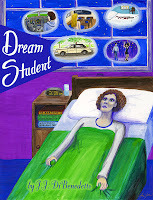
Sara Barnes is about to find out. She thought that all she had to worry about was final exams, Christmas shopping and deciding whether she likes the cute freshman in the next dorm who's got a crush on her.
But when she starts seeing dreams that aren't hers, she learns more than she ever wanted to know about her friends, her classmates...and a strange, terrifying man whose dreams could get Sara killed.
About DREAM DOCTOR (Book #2)
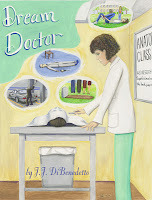 “I didn’t expect to be woken up by someone I don’t know dreaming about killing somebody. I thought I was done with that once and for all..."But Sara's not done with it. As if adjusting to life as a newlywed and starting medical school weren't difficult enough, she's started seeing the dreamas of everyone around her, again. Before everything is said and done, those dreams might destroy Sara's hopes of becoming a doctor, wreck her marriage and even end her life...
“I didn’t expect to be woken up by someone I don’t know dreaming about killing somebody. I thought I was done with that once and for all..."But Sara's not done with it. As if adjusting to life as a newlywed and starting medical school weren't difficult enough, she's started seeing the dreamas of everyone around her, again. Before everything is said and done, those dreams might destroy Sara's hopes of becoming a doctor, wreck her marriage and even end her life...
About DREAM CHILD (Book #3)
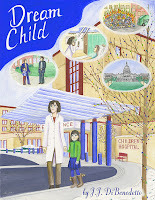 "I would give anything to take this away from her. I would gladly go back to having the nightmares myself - the very worst ones, the ones that had me waking up screaming in a pool of my own vomit - rather than see Lizzie go through this..."As a resident at Children's Hospital, Sara can handle ninety hour workweeks, fighting to save her young patients from deadly childhood diseases. But she's about to be faced with a challenge that all her training and experience haven't prepared her for: her four-year-old daughter has inherited her ability to see other people's dreams...
"I would give anything to take this away from her. I would gladly go back to having the nightmares myself - the very worst ones, the ones that had me waking up screaming in a pool of my own vomit - rather than see Lizzie go through this..."As a resident at Children's Hospital, Sara can handle ninety hour workweeks, fighting to save her young patients from deadly childhood diseases. But she's about to be faced with a challenge that all her training and experience haven't prepared her for: her four-year-old daughter has inherited her ability to see other people's dreams...About DREAM FAMILY (Book #4)
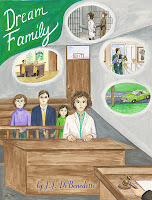
"Why is this so hard for me? Why am I having so much trouble? Why do I feel so helpless, so hopeless? What the hell is wrong with me?"After tangling with murders and mobsters, not to mention medical school and three years of residency, Sara thought she could handle anything. And then the police show up without warning at her new office and arrest her for a crime she can't possibly have committed. Sara's confidence, and her grip on reality, is shattered during one terrifying night in jail. Now, the very dreams that have endangered her life and driven her to the edge of madness may be the only thing that can help Sara find herself again...
Excerpt
“You said he opened the trunk. Were you watching from behind him?” I try to picture it. I feel pounding, as though my brain is beating itself against the inside of my skull. I was in the back seat, but then – I guess – yes. I was outside.
“Yeah. I see what he’s doing. I can see the trunk.”
“Can you see the license plate?” God! It’s really hard to focus. It hurts. I just want it to stop hurting. I can see – it’s an Ohio plate. I can read - I think I can read it.
“LXG. L like in large, X like in x-ray, G like in good. And then three numbers. One, four, seven.” I feel a tear fall from my eye. I want to stop. I can’t – can’t keep doing this.
“Are you sure? L, X, G, one, four, seven?” Beth’s voice is so calm, so peaceful. How can it be so calm? I hate her for that. What right does she have to be so calm?
Am I sure? I don’t – I have to focus. Focus. Focus. “Yes. Definitely. I’m sure.”
There’s a hand on my head, pushing my hair off my forehead. Something cold – a washcloth? That’s nice. That feels a little better. “You were amazing,” Beth whispers into my ear. “Really amazing. I’m proud of you.”
I can’t make any words come out; none of my muscles want to work. I think I might have managed a very weak smile, but I’m not even sure about that.
I feel a hand on my back, and another on my forehead, I’m being pushed up. Someone grabs my left hand and puts a cup into it, and some – pills? aspirin, maybe? – into my right hand. “There you go. Swallow those, have a little water,” Beth says. I follow her orders, and I’m lowered back down.
“Good. Now go to sleep.” I feel lips pressing against mine. I assume they’re Brian’s. I hope so…LinksWebsite Amazon author page Facebook Goodreads
Purchase Links
Smashwords
AmazonDREAM STUDENT (Book #1)
DREAM DOCTOR (Book #2)
DREAM CHILD (Book #3)
DREAM FAMILY (Book #4)
Published on April 25, 2013 19:16
April 21, 2013
WHAT THE EXPERTS SAY: Canadian Author Katalin Kennedy
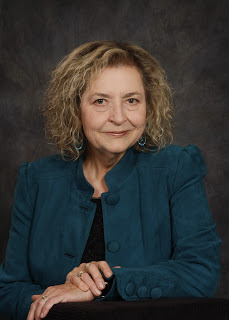 Katalin Kenedy, Author
Katalin Kenedy, AuthorTHE WOMEN GATHER
Please welcome Canadian author Katalin Kennedy whose first novel, THE WOMEN GATHER, spans the late 1990s to 2066 to bring us a story about the journey of women. Written to entertain, the author believes her primary goal is to influence women to comprehend how “to acquire an acceptance of their self-worth.” Although she recognizes that the balance between men and women has grown in some countries, she proposes that a key issue is that we women still see ourselves as unworthy.
Katalin Kennedy escaped from Hungary in 1957 at the age of 8 with her parents and landed in Canada. For 30 years, she worked for Health Canada where she became involved in women’s issues and organizations. She “re-invented” herself as a writer following her retirement.
Don’t miss the giveaway opportunity at the end of the interview.
Q: One of your reviewers said that THE WOMEN GATHER was “Written by a woman, about women, for women but with men in mind.” Is your book directed only at women? What message did you want to deliver to women? What role do men play in your message to women?
Katalin Kennedy: I do hope that men will read the novel. There are a few male characters in THE WOMEN GATHER: Michael, Desmond, Milosh, Joseph and Liam. They are there on the periphery, however. As the novel unfolds, we are not quite clear how they each feel about the approach which the Norean Order has chosen to pursue. But we recognize that the men represent a necessary aspect to the story line.
I make no apologies that the quest of the novel is about women ‒ to acquire an acceptance about their self worth. What the women continue to learn, through their research and journey is that balance is the key to the future. We need both men and women to achieve harmony for humanity.
Q: Why did you write THE WOMEN GATHER?
Katalin Kennedy: I am an ordinary person who is at the same time an eternal optimist. My belief is that we can evolve to become our best selves and make a shining difference in the world.
Whenever women gather, whether in groups of four or twenty-four, we talk of profound matters that deal with 'involvement': within our family, within our community and within our world. We share dreams of a future of peace and understanding that delve deep into universal spiritual truths. Our voices are significant and we need to be heard. We live in a period of history which has the potential to be the most enlightened. Yet, it has become almost expected that we adopt a blaming, pessimistic, dark attitude, both for today and for what lies ahead. Life offers us choices. I have chosen to be positive. My dream is a future of hope for humanity. What if all that can become a reality?
Q: Did you write THE WOMEN GATHER to entertain? To teach? or to influence?
Katalin Kennedy: I would like to believe I did all three. I think though the first point would be 'to influence'. While we may feel that we have come a long way in the developed countries concerning how we are valued as women, I'm not convinced. And clearly, women have miles to go to achieve equality in many developing countries. For those of us who are fairly comfortable in our lifestyle and in our role as women, we have a tendency to look the other way and not understand that the road to balance with our male counterparts is not quite so smooth as we would like to believe. I have identified that part of the challenge is that we women do not see ourselves as worthy, owing to various circumstances. We need to acquire our own sense of confidence. The 'teaching' aspect of the novel is most evident in the presentations by key note speakers at the 2066 Gathering Symposium. Hopefully, the characters, the unraveling of the layers of family stories and the history of the Norean Order, as well as the mysteries and mysticism which permeates the novel will provide 'entertainment'.
Q: Did you and your parents’ background as refugees from 1956 Hungary influence your writing?
Katalin Kennedy: Although I was only 8 years old when my parents and I escaped, my Hungarian background is very much a part of who I am. I've never belonged to Hungarian associations etc. because my father was adamant that we came to Canada to become Canadians. Nevertheless, I can't help but be influenced by Hungary's rich culture filled with traditions and mythologies and superstitions -- so I will continue to weave some of that into my writing. At the same time, I've always had a strong leaning towards peoples who have been maligned and dismissed by mainstream society throughout the world; sadly most countries have the downtrodden. The treatment of Roma people, particularly in Europe throughout centuries, has always bothered me. When looking for a culture which might lead the way into the future, that is the one I chose.
Q: Your novel spans the 1990s to 2066. How do you engage readers to travel to the future with your characters? How do you make the future believable?
Katalin Kennedy: I never intended for this novel to be 'futuristic' per se, but rather Utopian. I wanted the reader to imaginewhere the world might be in 70 years rather than me identifying it outright. The setting takes place in Lemuria, a sheltered community where life has remained much as it had been at the beginning of the Norean Order. I use bits of technological tools, because that is one way that the Order has attempted to keep up with progress in the Outerworld. This of course is also critical as the women continue their research. The key note speakers at the 2066 Gathering Symposium are the ones who shed some light as to certain issues the Norean Order will need to face, once the Portal is opened. I've seen too many representations of the future as dark and lacking in human control. I'm not convinced of that direction. The future is a mystery for all of us. I rather wanted to leave it that way. But I did want to suggest that we could in fact step into a potentially positive new world order, along with Tunde.
Q: What makes a hero/heroine? What makes a villain? What roles do heroes and villains play in THE WOMEN GATHER?
Katalin Kennedy: As an English literature major, I was very aware that having heroes/heroines and villains in a novel is a traditional classic style of writing. I tried to reject that approach at the beginning of my writing. I wanted the story to be about a journey of discovery to self worth. I wanted to demonstrate that we all have struggles: intellectually, spiritually, artistically, economically, ecologically, politically, and in society as a whole. I didn't want to write about obvious 'white' shining heroines and 'black' shadowy villains. But as the writing evolved, with all its mystical aspects, I found it impossible to dismiss the technique, and so the characters themselves took on a position. What I hoped in the end to suggest was that 'truth' is not as clear-cut as all that. I wanted to leave enough ambiguity that those whom we might have considered to be dark shadow characters, perhaps they too had some validity.
Q: How do you help readers care about your characters?
Katalin Kennedy: The characters in my outline began as 'paper doll cut out' people to whom I gave certain functions; to my amazement, they became three-dimensional lifelike, likeable figures as the stories unravel. They have backgrounds, they have personalities, they have quirks and they have a purpose, not only to fulfill the plan for the novel, but to evolve for themselves. There is a sense of wisdom among many, which they have gradually acquired through life tragedies and learnings. They don't necessarily want the mission that has been placed upon them, but they come to accept it. They have taught me a lot, and I rather wish they were real people in my real life. I hope they also reach the reader in that way. If I were asked which one is my favourite, I don't believe I could choose. The main characters take on a life of their own. Personally, that is one of the most delightful aspects of having written THE WOMEN GATHER.
Q: Before you start to write, do you have an outline of your story? Or does it write itself?
Katalin Kennedy: As I said earlier, I am an English literature major so I have read and analyzed many writings over the years. In the past, I wrote fairly brief vignettes, but nothing in way of a novel. Therefore, I was extremely methodical: I prepared a chapter by chapter outline; character names were chosen with care; histories and story lines for each character were developed; symbolism was identified; great deliberation went into the various techniques and discussions involved in producing the diaries, journals, videos and articles which provide the 'flash back' aspects of the novel; and finally, a huge amount of research was conducted on the issues addressed by the key note speakers. And yet, with all that planning in place, once the writing began, the characters and even some aspects of the story line evolved and took on a life of their own ‒ enriching the original outline, and my personal experience.
Q: Tell us something about yourself. What do you do when you’re not writing? Favorite music? Books? If you weren’t a writer, what would you be?
Katalin Kennedy: I worked for 30 years in the Canadian Federal Government in social service programs; this included working with major women's organizations. THE WOMEN GATHER draws on some of the learnings from that experience. My husband who died seven years ago was a Protestant Minister, so that my life also involved the church community. Once I retired, and then reinvented myself after his death, I joined many groups which focus on learning (adult education) and service (community involvement). I am also currently president of the local Cornwall and District chapter of the Canadian Federation of University Women. I continue to enjoy writing my monthly 'Kindness Column' for Seaway News, now in my 10th year.
I've always been a story teller. It is logical therefore that most of my interests include some aspect of that creative process: attending theatrical performances, and 'musicals'; listening to some favourite performers: Billy Joel, Rod Stewart, Andrea Bocelli to name a few. My favourite writer is Margaret Atwood; I have always been in awe of all the different 'worlds' she is able to create in each of her novels. I enjoy travel in order to experience other life styles and cultures.
At this point in my life, I can't think of anything else I would rather do than become more disciplined about writing every single day.
About Katalin Kennedy
On Christmas Eve, 1956, Katalin (Kennedy) and her parents escaped from Hungary, their homeland. The following April, they arrived as refugees in Saint John, New Brunswick. She spent most of her adult life in Ottawa, Ontario. Katalin graduated from Carleton University and joined Health Canada. She managed major national projects as Program Consultant on Seniors’ and Women’s Issues. Katalin is involved in various community activities including writing her monthly Kindness column for Cornwall’s Seaway News. Her first novel THE WOMEN GATHER has been published by Baico Publishing Inc. http://katalinkennedy.com https://www.facebook.com/EmesesDreamProduction
About THE WOMEN GATHER
Nora’s mission had been demanding. She wanted to find a way for women to rediscover their true selves, denied to them throughout the centuries—and to make the world a better place. When the young
 girl Aideen asks Tunde if she may come to Lemuria, Ontario and learn about the beginnings of the Norean Order founded in 1998, she agrees. Tunde’s preoccupation, however, is with the smooth flow of the ‘Gathering’ symposium of 2066. Women from all the Sanctuaries throughout the world are in attendance and await the momentous event: the opening of the Portal to the Outerworld. She has little time to spend with Aideen who unravels layers and layers of stories found in letters, articles, diaries, newspaper clippings and videos about the struggles and triumphs faced by Nora’s family and by the Order itself. What Aideen also detects is something she considers to be mystical—that no one wants to acknowledge.
girl Aideen asks Tunde if she may come to Lemuria, Ontario and learn about the beginnings of the Norean Order founded in 1998, she agrees. Tunde’s preoccupation, however, is with the smooth flow of the ‘Gathering’ symposium of 2066. Women from all the Sanctuaries throughout the world are in attendance and await the momentous event: the opening of the Portal to the Outerworld. She has little time to spend with Aideen who unravels layers and layers of stories found in letters, articles, diaries, newspaper clippings and videos about the struggles and triumphs faced by Nora’s family and by the Order itself. What Aideen also detects is something she considers to be mystical—that no one wants to acknowledge.Links
Social LinksFacebook https://www.facebook.com/EmesesDreamProductionTwitter: https://twitter.com/emesesdreamprod
Where to PurchaseBaico Publishing Inc. Contact at: baico@bellnet.caChapters Indigo: http://www.chapters.indigo.ca/books/The-Women-Gather-Katalin-Kennedy/9781926945873-item.html?ikwid=the+women+gather&ikwsec=Home
Giveaway:First prize, second and third prize: Autographed Copy of THE WOMEN GATHER
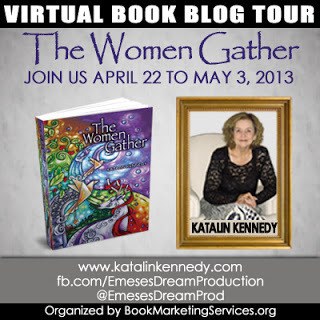 Click HERE for giveaway
Click HERE for giveaway
Published on April 21, 2013 20:16
April 16, 2013
WHAT THE EXPERTS SAY: Thriller Author Kenneth S. Murray
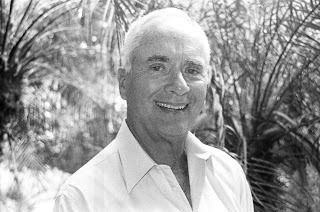 Kenneth S. Murray, Author
Kenneth S. Murray, AuthorTHE JEWELERPlease welcome Kenneth S. Murray who joins us to talk about his latest thriller, THE JEWELER. Mr. Murray based his protagonist on a real jeweler whose early life fascinated the author. In the novel, the jeweler discovers he gets a rush when he kills someone and is recruited by the CIA as an assassin.
Mr. Murray became an author due to "retirement boredom" combined with his realization that he has a knack for storytelling. To develop his characters, he "becomes" them to the point where his wife questions who is coming to dinner. He values backstory and researches events to mix fact with fiction for credibility.
Please check out the opportunity to win giveaways at the end of this interview.
Q: What inspired you to create your novels and THE JEWELER specifically?
Kenneth S. Murray: Retirement boredom. When I met Rock Hard, the jeweler's real name, in Grayton Beach, Fl., and his beautiful Narragansett Indian wife, Carla, and learned facts about his life, I knew I had to write a novel about them.
Q: How helpful was your career in a top secret cryptographic unit of the U. S. Army in the Pentagon in writing your thrillers?
Kenneth S. Murray: Zero. It just looks good in my biography and lets readers know that I did serve my country.
Q: What do you do to make your characters compelling so that your readers care about them? --Especially one who seems to enjoy killing.
Kenneth S. Murray: Rock's early and unusual life formed the basis of my interest. Read 'A Note to the Reader,' in the front of the book. Until his first kill, Cole Hanson didn't know he had a Jekyll and Hyde split personality. The reader discovers his affliction as it occurs and makes the hero more human to have a very major problem. The reader develops empathy for him if the writer develops the plot carefully.
Q: I was reminded of John Le Carre a bit when reading THE JEWELER. Heroes and villains become mixed. How would you define a hero? A villain?
Kenneth S. Murray: A hero can be too good. It's not credible to the reader—but he must have a basically good character, with flaws so the reader can associate with him. Now a villain needs to be, in most cases, pure evil; plus a few dirty, rotten scoundrels who can screw up a lot and give the reader some humorous touches.
Q: Do you write to entertain only? Or do you want to deliver a message? Educate? Inform?
Kenneth S. Murray: Mostly to entertain. Messages are difficult to weave into fiction for me. Educate and inform, yes. However, at the end of my new novel, "The Second Creation," I really take a position through my characters.
Q: What do you do to make your novels “thrilling” and “suspenseful?”
Kenneth S. Murray:When I first started to write, I found that I had a knack for story telling—a rather wild and crazy imagination, my wife tells me. I did what my favorite cynic, Oscar Levant, said, "There is a fine line between genius and insanity. I erased that line."
Q: How important is back story to your novels?
Kenneth S. Murray: That depends on the importance of each character in the book. Some need more than others, but I don't dwell too much on back story, I always like to keep moving the plot along and add morsels of personality, good or bad, to characters as they appear or re-appear in the book.
Q: How do you make your books “credible?”
Kenneth S. Murray: Now here's where 'credible' takes a leap. At a book conference an editor from a major publisher told me I could not use the real name of the jeweler - Rock Hard !! Even in fiction, he said you have to build credibility with the reader and no one would believe such a name. I refer to that in "A Note to the Reader."
I research a lot to find actual events that happened—facts that can be intertwined with fiction. Many of the adventures that occur in the novel did actually happen—like the murders in the Vatican. The mother of the dead guard and his wife, just a few years ago, was pressing the Italian police to investigate further. She does not believe the official report from the Vatican.
Q: Do you outline your stories or do your characters just take you along for the ride?
Kenneth S. Murray: I do not outline. I feel it restricts me. You're quite right—I actually become the characters and live in another mind and body. Sometimes I sense my mind is floating in the ether of space, searching for another person. My wife would ask me sometimes, "who’s coming to dine with me tonight?"
Q: Tell us a little about yourself. What do you do when you’re not writing?
Kenneth S. Murray: I read a lot—mostly fiction of course. My wife reads non-fiction. We're both into exercise, almost every day. We spent many summers in Colorado, hiking in the Rockies. I play golf about twice a week—any more than that it’s boring. Big into movies when something good comes along. We enjoy going to museums in cities we visit—see the art, and attend symphonies. I really like champagne or sparkling wines and a few red wines with good food.
About Kenneth S. Murray
Ken Murray lives with his wife Beth in Winter Park and has sons and daughters and three grandchildren. A graduate of the University of Virginia, he served in a top secret cryptographic unit of the U. S. Army in the Pentagon during the Korean war organizing intelligence from codes deciphered by the National Intelligence Agency. He moved to Florida in 1958, retired early and for the past fifteen years has been writing novels and poetry.About THE JEWELER
Cole Hanson learned the jewelry trade early in life. Dealing in emeralds in Columbia, Hanson is kidnapped and taken to the mountain jungle lair of the Black Jaguar, a cocaine drug lord. He witnessesa horrible triple murder, executes the killer, and escapes. Hanson is overwhelmed by a euphoric rush and struggles with this discovered Jekyll and Hyde personality. He is recruited to become an assassin for the CIA who learns of his strange predilection for death and uses this alter ego to press The Jeweler ever deeper into espionage and assassinations around the world. Murder occurs in England. Diskettes with top secret information about the Soul Catcher are stolen. Incensed, Hanson seeks the killers, but is on his own without CIA approval as clues take him across Europe and to the Vatican for revenge. After twenty years of service The Jeweler attempts his toughest sanction. Hussein is well guarded moving between palaces and seems an impossible target until fate deals a hand. Hussein flees on his mega-yacht. Hanson battles his way on board for the final action and twists in the Persian Gulf.
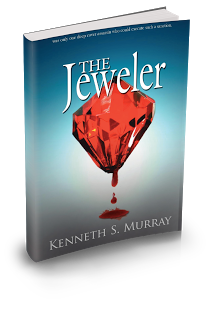
Links Social Links:Facebook Twitter: https://twitter.com/KenMurrayAuthorGoodreadsWhere to Purchase:Amazon
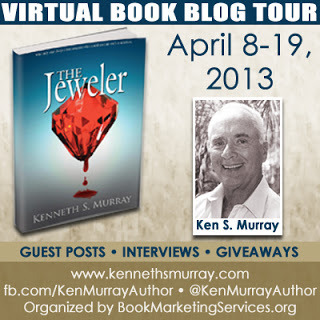 Click here for giveaway
Giveaway
First prize: Autographed Copy of The Jeweler; $20 Amazon Gift CardSecond prize: Autographed Copy of The JewelerThird prize: Autographed Copy of The Jeweler
Click here for giveaway
Giveaway
First prize: Autographed Copy of The Jeweler; $20 Amazon Gift CardSecond prize: Autographed Copy of The JewelerThird prize: Autographed Copy of The Jeweler
Published on April 16, 2013 15:46
April 12, 2013
WHAT THE EXPERTS SAY: YA Author, Robin Leigh Morgan
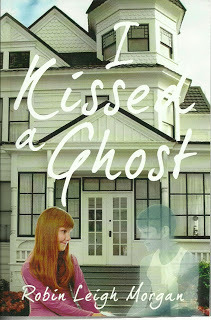 Robin Leigh Morgan brings us I KISSED A CHOST, a YA (Young Adult) Paranormal/Time Travel/First Kiss novel targeted at pre-teens. As stated by Morgan, quite simply the story is about a girl (Mary) and her kissing the ghost (George) she has living in her house.
Robin Leigh Morgan brings us I KISSED A CHOST, a YA (Young Adult) Paranormal/Time Travel/First Kiss novel targeted at pre-teens. As stated by Morgan, quite simply the story is about a girl (Mary) and her kissing the ghost (George) she has living in her house.Retired for three years as a civil servant, Morgan is starting a second career as an author, building on her more than 11 years writing commentary for a community newspaper. She plans to write cross-genre, starting with YA time-travel romance.
Q: What inspired you to write a time-travel, paranormal story, I KISSED A GHOST, which according to one reviewer is “a sweet, delightful tale sure to especially appeal to pre-teen readers”?
Robin Leigh Morgan: I actually began to write back in June 1995, where until June 2006 I wrote over 450 commentary type items for a community newspaper. Along the way I decided to see if I could write something else. I didn’t own a computer back then, but I did have access to one where I wrote my commentaries, and it was on this computer I wrote about two pages a week. Once I got my computer I began to write what I wanted to be a contemporary romance with a paranormal element running through, but I never seemed to get the sense it would be good enough to be read by someone else. Eventually, someone suggested I write for a younger audience, which is how I came to write my debut novel, a YA (Young Adult) Paranormal/Time Travel/First Kiss romance entitled, I KISSED A GHOST. The story itself has been one of pure imagination; there was no specific thing which inspired to write this story, which brings me in part to your next question.
Q: Do your characters push you around and make you write what they want? Or are you in control? Do you start with an outline?
Robin Leigh Morgan: If you’re asking me whether I’m a plotter or a pantser I’d probably say a little of both. I make a skeleton of an outside, writing down the basic plot points I’d like to hit, and as the story unfolded I added more points needing to be hit; and as a sculptor starting with a wire base of what they’d like to have, I added material, then took some away, until I had the finished product I had in mind.
Q. How did you decide to give your book its title?
Robin Leigh Morgan: When I started to select a title for a book it had been a very challenging experience for me; but after racking my brain over it for a while, I decided to merely summarize the premise for the entire story in as few words as possible until I had something which could be used as the title for my book. Hence, since the story is about a girl (Mary) and her kissing the ghost (George) she had living in her house, I decided the story had to be called, I KISSED A GHOST.
Q: How do you make your paranormal world and ghostly characters credible?
Robin Leigh Morgan: By keeping things simple, easy to envision and able to relate to.
Q: What do you do to make readers care about your characters?
Robin Leigh Morgan: In creating my characters, especially that of Mary, I endeavor to create a situation where as many readers could relate to her (them) as possible.
Q: What are the attributes of a hero?
Robin Leigh Morgan: I’d have to say they would have to be honesty and the willingness to do the right thing for those who’d need it the most with any consideration of what he/she would get in return.
Q: What makes a good villain?
Robin Leigh Morgan: A villain attributes would have to be completely juxtaposed when placed side by side to that of a hero.
Q: How helpful is your career of writing commentaries and other nonfiction items to writing fiction?
Robin Leigh Morgan: In writing these commentaries I had been limited to a thousand words in which I needed to quickly communicate what I wanted the readers to be able to read and who would hopefully agree with my thoughts. The more I wrote, the easier I found it to write everything I needed to say given the word restriction I’d been under. When it came to writing fiction, especially my first YA Paranormal/Time Travel/First Kiss romance novel, I found it easy to delete the additional “fluff” I’d written during my first drafts without losing anything I wanted to say.
Q. What are you working on at the moment?
Robin Leigh Morgan: As I’ve stated in the above I had started to write a contemporary romance but never completed writing it. Now with my debut YA novel self-published I’ve returned to writing the romance manuscript I had started many years ago, and approaching it anew with the knowledge I’ve gained along the way in writing I KISSED A GHOST. The reason I’ve returned to writing it is relatively simple, I’ve always felt somewhat incomplete not having completed something I once had started out to do, and I now want to fill the void it has created in my life.
Q: What do you do when you’re not writing? Tell us a little something about yourself. What are some of your favorite things to do?
Robin Leigh Morgan: When I’m not writing I simply enjoy my retirement. I enjoyed watching NetFlix through discs or online especially those of my favorite programs when I’d been much younger. I’m currently watching “Wild Wild West” (1969–1973) on discs, and online it’s “The Adventures of Robin Hood” (1955-1959). I also like to listen to easy listening type music, Broadway tunes and comedy.
About Robin Leigh Morgan
Robin Leigh Morgan has enjoyed a long career writing commentaries and other nonfiction items, but since retiring Robin has devoted leisure time and acquired skills to the writing of the first of what will be many books. Robin’s debut novel is a Young Adult paranormal romance, complete with elements of time travel and the special first kiss in every girl’s life. Robin believes the blending of these different genres will be endearing to all those who read it, regardless of their age.
About I KISSED A GHOST
In I KISSED A GHOST, Mary gets a new classmate named Jonathan who’s a great baseball player and to get on the team, he needs Mary’s help to improve his grades. Six months later when she learns she’s moving, she decides to give him something special--a first kiss. Moving into her new home she soon discovers it has a ghost named George, her age, who takes her on numerous trips to the past of a hundred years ago. As she meets children her own age, everyone teases her about her house being haunted, but no one will go inside. Mary likes his help doing her math homework, writing her reports, and taking her back in time. George and Mary’s interaction grows and she eventually gives him a quick peck on his lips while they’re in the past, which is the only place George is a real boy, for having done something special for her. Can Mary kiss George again at the special date and time he needs to be kissed? What happens afterwards if she does? The answers are all in the book!
Links
Purchase Amazon
Also available on: Amazon.co.uk Amazon.de Amazon.es Amazon.fr Amazon.it
AuthorTwitter: @Excerpts
Under the category of GHOSTLY WHISPERS on any of these blog sites:http://www.mypennameonly.webs.com[website/blog]
LinkedIn Groups Authors/Writers Helping Authors/Writers
Young Adult Book Authors
Published on April 12, 2013 17:46
April 9, 2013
WHAT THE EXPERTS SAY: SciFi/Action Author, L.D.C. Fitzgerald
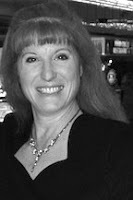 L.D.C. Fitzgerald, Co-Author
L.D.C. Fitzgerald, Co-AuthorSAVING JACKIE K
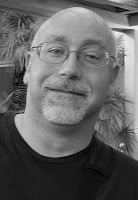 L.D.C. Fitzgerald, Co-Author
L.D.C. Fitzgerald, Co-AuthorSAVING JACKIE K
Those of us alive at the time of the assassination of John F. Kennedy remember exactly what we were doing when we learned of his murder. We also remember the arrest of Lee Harvey Oswald, and the Warren Commission’s conclusions. In SAVING JACKIE K, L.D.C. Fitzgerald rewrites the event and combines fact and fiction to tell about an attempt on First Lady Jackie Kennedy's life and those who travel back in time to try to prevent it.
The author, devoted fan of the late President Kennedy and the First Lady, wrote the novel to entertain, but also to create a sense of “what if.” Oh, and if you're confused about the identification of the author, you'll find the answer in a response to one of the following questions.
Don’t miss the excerpt from SAVING JACKIE K and the chance to win an Amazon gift certificate at the end of this interview.
Q: What led you to write a thriller that rewrites a prominent historical event?
L.D.C. Fitzgerald: Although most people alive today hadn't been born at the time of the JFK assassination, it remains a topic of fascination. Any mention of the Kennedy Conspiracy will inevitably spark debate—most people seem to have an opinion on what happened that day in Dealey Plaza. And, as the fiftieth anniversary looms on November 22, 2013, the dialogue will likely intensify.
The idea for the story was inspired by a B-movie from 2000 where a man from the future goes back in time and prevents the assassination. I thought the concept was a great idea, but wanted to twist it on its head.
Q: One of your reviewers praised the author’s “blend of fact and fiction.” How important was backstory to creating credibility and getting readers involved?
L.D.C. Fitzgerald: Backstory was extremely important in two respects. First, I needed to create histories for the fictional characters and the fictional world. I wanted to make an alternate reality that was dire enough to compel the team to want to travel back in time and change it. And, I wanted each of the characters to be motivated on a personal level.
Second, since the JFK Conspiracy happened fifty years ago, I needed to inform readers about the people involved and the events leading up to the assassination. The tricky part was to weave the fact and fiction together to tell a story. The factual components of the narrative adhere to the official record of what happened in Dealey Plaza in 1963, and the events leading up to the tragedy. The particularly difficult part was to create motives for why the real-life historical figures acted the way they did. For example, how and why was Lee Harvey Oswald involved? Why did he murder a police officer 45 minutes after the assassination?
Q: Is it just a coincidence that your last name is Fitzgerald?
L.D.C. Fitzgerald: Great question! I will let you in on a little secret—Saving Jackie K was actually written by two people! For simplicity, my coauthor and I wanted one author name, and we chose “Fitzgerald” to honor President Kennedy’s middle name. The initials of the pen name—L.D.C.—are ours: my initials are L.D. and my coauthor’s are D.C.
Q: Did you write SAVING JACKIE K to entertain or to educate? Or to make us think “what if?” Did you want to deliver a message?
L.D.C. Fitzgerald: Without a doubt, my primary goal was to entertain. I want readers to have fun!
That said, it’s an interesting and informative topic, and I hope the book sparks thought and debate. It’s intriguing to speculate “what if,” and I got a chance to explore those scenarios when writing.
Q: What makes readers care about your characters?
L.D.C. Fitzgerald: The heroes of my novel all have strong personalities, each with his or her own character flaws. So they butt heads and argue quite a bit as they are planning the mission for Saving Jackie K. But deep down, they each have a personal motive that propels them forward, and makes them vulnerable.
In spite of their faults, throughout the novel, the characters develop a deep affection for each other, and fierce protectiveness of each other. Ultimately, they want to right the wrongs of the past, and they relentlessly work together to make that happen.
I’m hoping that readers cheer for the team’s successes, and mourn their failures along the way.
Q: What are the characteristics of your heroes? Of your villains?
L.D.C. Fitzgerald: The heroes of Saving Jackie K are stubborn, loyal, self-reliant, dedicated, and feisty. They all have a strong moral compass, and feel a righteous obligation to change the past for the better. However, one feels that the “ends justify the means.”
The main villain is the mastermind behind the plot to assassinate President Kennedy. Equally powerful as evil, this antagonist stops at nothing to achieve personal objectives, offering up innocent people as pawns and scapegoats.
Q: Tell us something about yourself. Are you an historian by trade? Are you thinking about writing other “what ifs”, such as, what would the U.S. be like if Lincoln had not been assassinated?
L.D.C. Fitzgerald: My coauthor and I are admirers of President Kennedy. He ushered in the space race, established the Peace Corps, prevented war with Russia during the Cuban Missile Crisis, and delivered moving speeches promoting racial inequality during a time when bombings and hate crimes ran rampant.
We are also fans of his wife, Jackie K. A First Lady of class and grace, Jackie was beautiful, refined, and highly regarded as a fashion icon. An educated woman fluent in French, Spanish, and Italian, Mrs. Kennedy dazzled the French by speaking in their native tongue during a diplomatic visit. Jackie also initiated and managed the first full-scale renovation of the White House in over a hundred years.
Although we are not historians by trade, we enjoyed studying the Kennedys and the JFK Conspiracy over the past decade.
We are kicking around ideas for our next “what if” adventure with the same team of heroes. Who knows? We may have them interfere with Columbus discovering America!
About L.D.C. Fitzgerald
L.D.C. Fitzgerald is the author of blockbuster novel, SAVING JACKIE K , a thrilling adventure to save the First Lady. In writing a story with an unexpected twist on the Kennedy Conspiracy, Fitzgerald relentlessly researched the facts regarding the JFK assassination, and wove them into a fictional world. The author even consulted with renowned conspiracy experts, and scouted the hallowed grounds in Dallas.
Where does the fact end and the fiction begin?
"Everything in my novel is true, except the stuff I made up." - L.D.C. Fitzgerald.
About SAVING JACKIE K
The First Lady in Danger?
Jump into the past to save her!
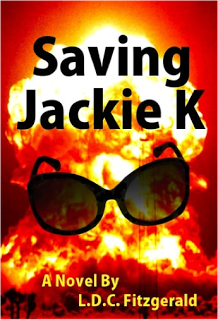
Enter an upside-down world where Soviet henchmen botched their mission to eliminate John F. Kennedy fifty years ago, slaying his wife Jackie instead. The unthinkable crime incites Americans and triggers an unending war with Russia.
In present day, as the two superpowers teeter on the brink of mutual destruction, a team of outlaws discovers a way to jump through time. The wisecracking felons decide to take matters into their own hands by traveling back to 1963 to save Jackie K. To fix the future, they must right the wrongs of the past.
But, their mission may go awry . . .
(Formerly titled Destination Dealey.)
Excerpt
Chapter OneWednesday, September 18, 2013
5:59 pm – EDT
Sera Banks clambered up the rungs on the side of the Chamber, a six-foot diameter aluminum-coated sphere resembling an enormous fishbowl. Dropping into its hollow core, she crammed herself and the bulky parcel on her back next to the petite frame of her mentor, once renowned physicist Dr. Iggy Mikos. She grasped the handle on the hatch and creaked it closed, enveloping them in darkness. “He’s coming. Punch it!”
Iggy stabbed at backlit buttons on each end of the Converter, a twelve-inch-long barbell-like device with a handhold in the middle. Her finger slipped. Patience. Feeding on Sera’s impetuousness could get them both killed. She steeled herself and counted off the memorized sequence. “Here we go!” They strapped on oxygen masks, and she entered the final keystroke.
A blinding flash of light and a deafening roar consumed the Chamber. The two scientists shrieked in agony before passing out.
6:00 pm – EDT
Captain Drew Sutherland sliced his access card through the magnetic reader to unlock the door and rushed into the lab, mouth agape. He circled inside the customary shabbiness of the blistered ocher walls, observing cracked lab benches cluttered with wires, circuits, and tools. Equipment hummed, while a familiar ionized smell permeated the air. All the apparatus for the project were present, but the researchers were absent. His decreasing spirals propelled him to the obvious destination, the shiny orb dead center of the warped linoleum floor. Cupping his palm on the convex surface, Sutherland flinched. The alloy blazed with heat. He stepped up on the ladder and heaved the hatch open with a massive forearm. The empty brass interior gleamed back at him in the fluorescent glare. He rubbed the back of his military buzz cut. Where could they be?
6:01 pm – EDT
Hurtling through the sky two miles west of the lab at thirty thousand feet, Iggy woke with a start, the Converter lashed to her left hand. Freezing wind roared in her face, numbing her as she gasped into the mask. Of all the luck—displacement must have triggered a blackout. Struggling to orient herself with respect to gravity, she waited the requisite number of seconds and then pulled the ripcord. The parachute billowed out. Snap! She felt the sensation of being jerked upward by an unseen entity.
Links
Amazon KindlePaperback
Website
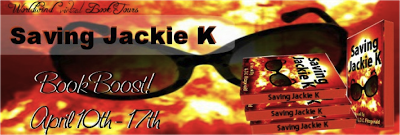 Click HERE for chance to win Amazon gift certificate
Click HERE for chance to win Amazon gift certificate
Published on April 09, 2013 19:10



